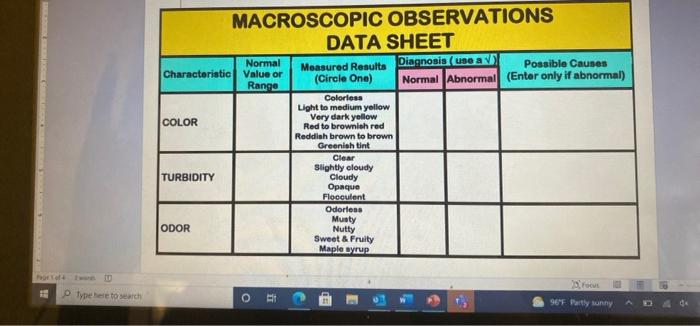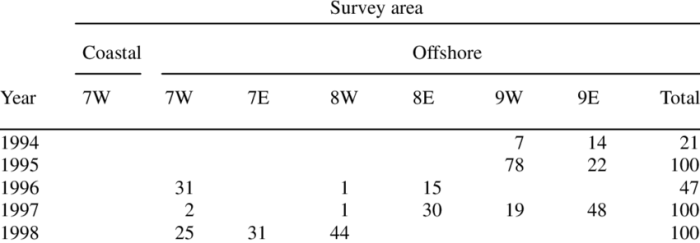Analyzing microsatellite data worksheet answers – Welcome to the realm of genetic research, where microsatellite data analysis unveils the secrets of DNA. Delve into the depths of our comprehensive worksheet, designed to guide you through the intricacies of microsatellite data analysis, empowering you with the tools to unravel the mysteries of genetics.
Microsatellite data, with its abundance of repetitive sequences, offers a treasure trove of information for geneticists. Its applications span a wide spectrum, from population genetics to forensic investigations. However, the analysis of this complex data requires a systematic approach, and our worksheet provides a step-by-step roadmap to ensure accuracy and efficiency.
Understanding Microsatellite Data

Microsatellite data, also known as simple sequence repeats (SSRs), are short, repetitive sequences of DNA that are highly polymorphic and widely distributed throughout the genome. They are valuable genetic markers used in various areas of genetic research, including population genetics, evolutionary studies, and forensic science.
Microsatellites are typically composed of 1-6 nucleotide units that are repeated in tandem, such as (AC)n or (GT)n. The number of repeats can vary between individuals, creating different alleles at a specific microsatellite locus. This variability makes microsatellites ideal for identifying genetic differences between individuals and populations.
Advantages and Limitations of Using Microsatellite Data
- Advantages:
- Highly polymorphic, providing high discriminatory power.
- Co-dominant inheritance, allowing for the identification of heterozygotes.
- Widely distributed throughout the genome, increasing the likelihood of finding informative markers.
- Relatively easy and inexpensive to analyze.
- Limitations:
- Can be susceptible to homoplasy (independent evolution of similar alleles).
- May not be suitable for all species or populations due to low levels of polymorphism.
- Can be difficult to interpret in cases of high stutter (insertion or deletion of repeat units during PCR amplification).
Analyzing Microsatellite Data
Analyzing microsatellite data involves several steps:
- DNA extraction and PCR amplification:DNA is extracted from the samples of interest, and the microsatellite loci of interest are amplified using PCR.
- Fragment analysis:The amplified PCR products are separated by size using techniques such as capillary electrophoresis or gel electrophoresis. This allows for the determination of the number of repeats at each microsatellite locus for each individual.
- Allele calling:The sizes of the fragments are converted into allele calls, which represent the number of repeats at each locus.
- Data analysis:The allele frequency data is analyzed using statistical methods to calculate genetic parameters such as heterozygosity, allele diversity, and genetic distance.
Methods Used to Analyze Microsatellite Data
- Population genetic analysis:Microsatellite data can be used to estimate population genetic parameters such as allele frequencies, heterozygosity, and genetic differentiation between populations.
- Pedigree analysis:Microsatellite data can be used to reconstruct pedigrees and identify relationships between individuals within a family or population.
- Forensic analysis:Microsatellite data is widely used in forensic science for individual identification and paternity testing.
Statistical Tools Used in Microsatellite Data Analysis
- Allele frequency estimation:Methods such as maximum likelihood or Bayesian approaches can be used to estimate allele frequencies from microsatellite data.
- Heterozygosity calculation:Measures of heterozygosity, such as observed heterozygosity (Ho) and expected heterozygosity (He), are used to assess genetic diversity within a population.
- Genetic distance calculation:Genetic distance measures, such as F-statistics (FST) or Nei’s genetic distance, are used to quantify genetic differentiation between populations.
Creating a Worksheet for Microsatellite Data Analysis
A worksheet can be a valuable tool for organizing and analyzing microsatellite data. The worksheet should include the following elements:
- Sample information:This includes information such as sample ID, species, population, and any relevant metadata.
- Microsatellite locus information:This includes the name of the locus, the primer sequences, and the expected size range of the alleles.
- Allele calls:This is where the allele calls for each individual at each locus are recorded.
- Genetic parameters:This section includes calculated genetic parameters such as allele frequencies, heterozygosity, and genetic distance.
- Notes and observations:This section allows for any additional notes or observations made during the analysis.
Example Analyses Using the Worksheet

The worksheet can be used to perform various analyses, including:
- Allele frequency estimation:The allele frequencies can be calculated for each locus using the allele call data.
- Heterozygosity calculation:The observed and expected heterozygosity can be calculated for each locus and for the entire dataset.
- Genetic distance calculation:Genetic distance measures can be calculated between different populations or individuals using the allele frequency data.
Interpretation of Results
The results obtained from the analysis of microsatellite data can provide insights into various aspects of genetic diversity and population structure. For example, high levels of heterozygosity and low genetic distance suggest a high level of genetic diversity and gene flow between populations.
Conversely, low levels of heterozygosity and high genetic distance may indicate genetic isolation and reduced gene flow.
Troubleshooting Common Errors in Microsatellite Data Analysis: Analyzing Microsatellite Data Worksheet Answers

Common errors that can occur during microsatellite data analysis include:
- Incorrect allele calling:This can occur due to errors in fragment analysis or data interpretation.
- Missing data:Missing data can occur due to failed PCR amplification or other technical issues.
- Homoplasy:Homoplasy can lead to incorrect estimates of genetic diversity and population structure.
- Stutter:Stutter can complicate allele calling and lead to errors in data interpretation.
Solutions to Avoid Errors
- Careful fragment analysis:Use high-quality fragment analysis methods and software to minimize errors in allele calling.
- Repeat experiments:Repeat PCR amplification and fragment analysis to minimize the impact of missing data and ensure accurate results.
- Consider homoplasy:Be aware of the potential for homoplasy and use appropriate methods to account for it in the analysis.
- Correct for stutter:Use stutter correction algorithms or software to minimize the impact of stutter on allele calling.
Importance of Quality Control, Analyzing microsatellite data worksheet answers
Quality control is essential in microsatellite data analysis to ensure the accuracy and reliability of the results. This involves careful attention to experimental methods, data analysis, and interpretation. By following best practices and implementing appropriate quality control measures, researchers can minimize errors and obtain meaningful insights from their microsatellite data analysis.
Popular Questions
What are the advantages of using microsatellite data?
Microsatellite data offers high levels of polymorphism, making it ideal for population studies and individual identification. Its abundance and even distribution throughout the genome facilitate comprehensive analysis.
What statistical tools are commonly used in microsatellite data analysis?
A variety of statistical tools are employed, including allele frequency estimation, heterozygosity calculations, and population differentiation measures. These tools aid in interpreting genetic diversity and population structure.